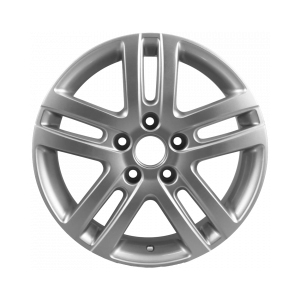torque convertor seal
Understanding Torque Converter Seals A Key Component for Automotive Efficiency
In the realm of automotive engineering, maintaining optimal vehicle performance hinges on countless intricate components working harmoniously together. One such critical component that often eludes the spotlight is the torque converter seal. This seemingly small piece plays a crucial role in the functionality of an automatic transmission, ensuring the efficiency and reliability of the entire system.
What is a Torque Converter?
Before delving into the specifics of torque converter seals, it is essential to understand what a torque converter is. A torque converter is a type of fluid coupling situated between the engine and the transmission. Its primary function is to transmit power from the engine to the transmission while allowing the vehicle to come to a stop without stalling the engine. It uses hydraulic fluid to transfer torque and is especially vital in automatic vehicles, where it ensures smooth acceleration and deceleration.
The Role of the Torque Converter Seal
The torque converter seal serves as a protective barrier, preventing the hydraulic fluid from leaking out of the converter. This fluid is essential for the torque converter to function correctly, as it transfers the necessary power. The seal ensures that the hydraulic pressure is maintained, thereby optimizing torque conversion and overall vehicle performance. A functioning seal not only preserves the integrity of the converter but also enhances the entire drivetrain's efficiency.
Types of Seals & Materials
Torque converter seals can vary based on their design and the materials used. Most commonly, they are made from rubber or silicone, materials chosen for their resilience against wear and the high temperatures generated within the engine compartment. Additionally, some seals incorporate metal components to bolster their structural integrity and resistance to deformation over time.
The designs of torque converter seals can include lip seals, O-rings, and various custom shapes tailored to specific vehicle models. Each design has its advantages, from ease of installation to providing a more secure fit that minimizes fluid leaks.
Common Issues and Signs of Failure
torque convertor seal

Despite their robustness, torque converter seals are not impervious to wear and tear. Over time, exposure to heat, pressure, and the corrosive properties of hydraulic fluid can lead to deterioration. A failing torque converter seal can manifest in several ways, including
- Fluid Leaks One of the most evident signs is the presence of transmission fluid pooling under the vehicle. A leaking seal can cause a significant drop in fluid levels, which can lead to transmission failure if not addressed promptly. - Slipping Transmission If the seal fails and fluid pressure diminishes, the torque converter may struggle to engage, resulting in slipping and miscommunication between the engine and transmission.
- Overheating Insufficient hydraulic fluid due to a seal leak can cause the transmission to overheat, leading to severe damage if not addressed swiftly.
Maintenance Tips
To extend the life of a torque converter seal and ensure smooth vehicle operation, regular maintenance is crucial. Here are some tips
1. Regular Fluid Changes Ensure that the transmission fluid is changed at recommended intervals. Fresh fluid helps reduce wear and tear on seals and other components.
2. Inspect for Leaks Regularly check for signs of fluid leaks and address any sightings immediately. Early intervention can save costly repairs in the long run.
3. Temperature Management Monitor the transmission temperature, as excessive heat can degrade seals more rapidly. If the vehicle often overheats, exploring cooling system options is advisable.
Conclusion
In summary, the torque converter seal is a vital yet often overlooked component in automatic transmissions. Its primary function of maintaining hydraulic fluid integrity ensures the torque converter operates effectively, thereby supporting overall vehicle performance. Regular maintenance, awareness of potential issues, and timely repairs can keep this essential part functioning optimally, translating to a smoother, more efficient driving experience. Understanding and caring for this component can enhance your vehicle's longevity and performance, making it a priority for any conscientious vehicle owner.
-
Understanding the Front Main Engine Seal: Purpose, Maintenance, and Installation
News Jul.29,2025
-
Understanding O-Rings and Seal Rings: Types, Applications, and Custom Solutions
News Jul.29,2025
-
Understanding Crankshaft Oil Seals: Rear Seals, Pulley Seals, and Their Role in Engine Integrity
News Jul.29,2025
-
The Importance of Front and Rear Crankshaft Seals in Engine Performance and Oil Management
News Jul.29,2025
-
Crank Oil Seals: Functions, Types, and Cost Considerations in Engine Maintenance
News Jul.29,2025
-
A Comprehensive Guide to O-Rings and Seals: Types, Materials, and Global Applications
News Jul.29,2025
-
Mastering Diesel and Performance Engine Maintenance: A Guide to Critical Oil Gaskets
News Jul.28,2025
Products categories















